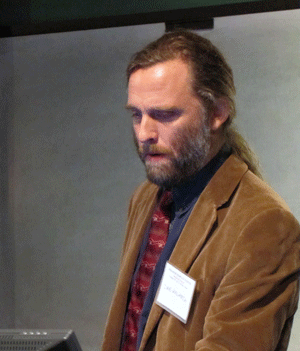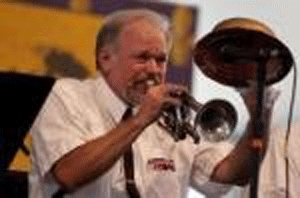The final draft of a consultants’ long-awaited study on New Orleans’ noise ordinance was released last Saturday to the public.
Oxford Acoustics, represented by musician/acoustic consultant Dave Woolworth, was engaged by the city (via Councilman Kristin Gisleson Palmer’s office) to conduct a study on the city’s noise ordinance, enforcement, and the city’s “soundscape.” The study areas focused primarily on Bourbon and Frenchmen Streets, as these contain a concentration of entertainment districts. The study is comprehensive and makes recommendations for changes in the city’s enforcement structure to handle noise issues, with the biggest suggestion
being to create a city sound officer and to move the measurement and enforcement of sound issues to the city’s health department. Currently sound complaints are handled by the NOPD’s “quality of life” officers, and the response time to complaints and efficiency of this group in enforcement has been relatively poor.
The study contains a very detailed analysis of the soundscape in New Orleans both on Bourbon and Frenchmen, and actually measures sounds in both those areas at different times of the day. The report also recommends that sound measurements be taken outside clubs that feature music (five feet from the premises rather than from the door of the building as is currently in the noise ordinance, with a limit of 95 dB. Other recommendations included a detailed flow chart of possible enforcement, mediation procedures, and a neighborhood-by-neighborhood assessment of noise issues for the entire city.
Essentially the report did not substantially address issues related to street musicians, social aid and pleasure clubs, Mardi Gras Indians and brass bands. Theoretically, the latter three on this list represent a moving sound, rather than one that’s stationary. Brass bands create an enormous wall of sound compared to other street musicians, and if they’re marching (and moving), but standing in one place is something entirely different. How does a neighborhood deal with a (what can be) extremely loud brass band? The Oxford study recommends a cut-off time of 10 p.m. Overall, though, the issues of street music in New Orleans didn’t include recommendations in the study.
Read the report and the appendices with recommendations here.
The Music and Culture Coalition of New Orleans (MACCNO), a group containing a broad range of interested musicians, music fans, businesses, consultants and other interested parties met on Wednesday to discuss the Oxford report. The consensus was that the group supports the conclusions and recommendations presented therein, but it’s putting in a request to the City Council as a whole to invite interested parties to public meeting, since the proposed noise ordinance changes will impact the entire city (albeit separate, some totally disparate neighborhoods). One of the Oxford recommendations is to look at areas individually, such as Bourbon Street, the French Quarter, Frenchmen Street, St. Claude Arts District, Freret Street and others which contain entertainment venues.
That’s a good plan because ultimately not only will residents have to abide by the law, but so will culture bearers, businesses who present music, zoning and permitting entites and musicians themselves. It was a prudent decision on the part of Councilman Palmer’s office to commission such a study, as it contains scientific information on noise creation and dissemination as well as specific recommendations that include the needs of all in the city, not the few who want to keep their urban neighborhoods as quiet as a suburb.
As we know, noise to one party’s ear is a music to another’s. Received an interesting call from musician Jamie Wight, professional musician (and member of the local musicians’ union) who feels that some brass bands are creating a “bad name” for local jazz. “There’s a brass band that plays on Bourbon in front of Johnny White’s, and while some of the tourists think they’re great, they’re just not that good and they drive off the regulars on the street,” he said.
“Musicians on Bourbon Street are legit, trying to make a legitimate living working a legitimate job and paying dues, and these street hustlers cut into their business. It should not be allowed. They play from 6 to 8 p.m. every night. It’s loud and it’s just bad.
“We want to show what real New Orleans music is like, and I’ve gathered some of the old-timers to play in front of Johnny White’s [718 Bourbon Street] on Thursday evening beginning at 5:30 p.m. I’ve had it with the loud music that isn’t very good. I’m putting together a professional band with people like Lionel Ferbos and Wendell Eugene, Louis Ford and others and every nickel in tips that we make will go totally towards the New Orleans Musicians’ Clinic.”
Wight said he’s paying the musicians in Thursday night’s band out of his own pocket to make a point.
So the controversy between what’s “loud” and what’s “good” isn’t just between residents and bars!
Now it’s not necessarily a bad thing to have young kids playing in brass bands on New Orleans streets, even if they don’t have the chops to play in a more polished style, or if they’re not up to a professional musician’s standards. It may be the only way these kids can learn to perform, and maybe the only way they can make a few bucks. But I see Wight’s point too. Perhaps the city could provide another place for these young bands to perform and hone their skills…perhaps in the French Market?
Another music organization is biting the dust: Sweet Home New Orleans.
After reconfiguring the organization from a social resource for musicians, Mardi Gras Indians and social aid and pleasure club members to a more educational resource for the local music community, Executive Director Sue Mobley resigned earlier this week and said that there was just not enough money to fund Sweet Home’s new mission. Mobley said she has handed off the organization’s documentation and data collection as well as the Empower Musicians Seal of Approval to MACCNO. “I am currently seeking a home for the music business educational programming, as well as for program director. There are currently six courses scheduled for fall 2013, and musician participants assigned to each of them, as well as a lengthy wait-list. I truly believe that this work is invaluable to our musical community, and I do not want to see it disappear with Sweet Home’s closure.”
Mobley has said she has approached the New Orleans Jazz & Heritage Foundation with taking over the educational portion of Sweet Home’s mission but has not confirmed their involvement.






